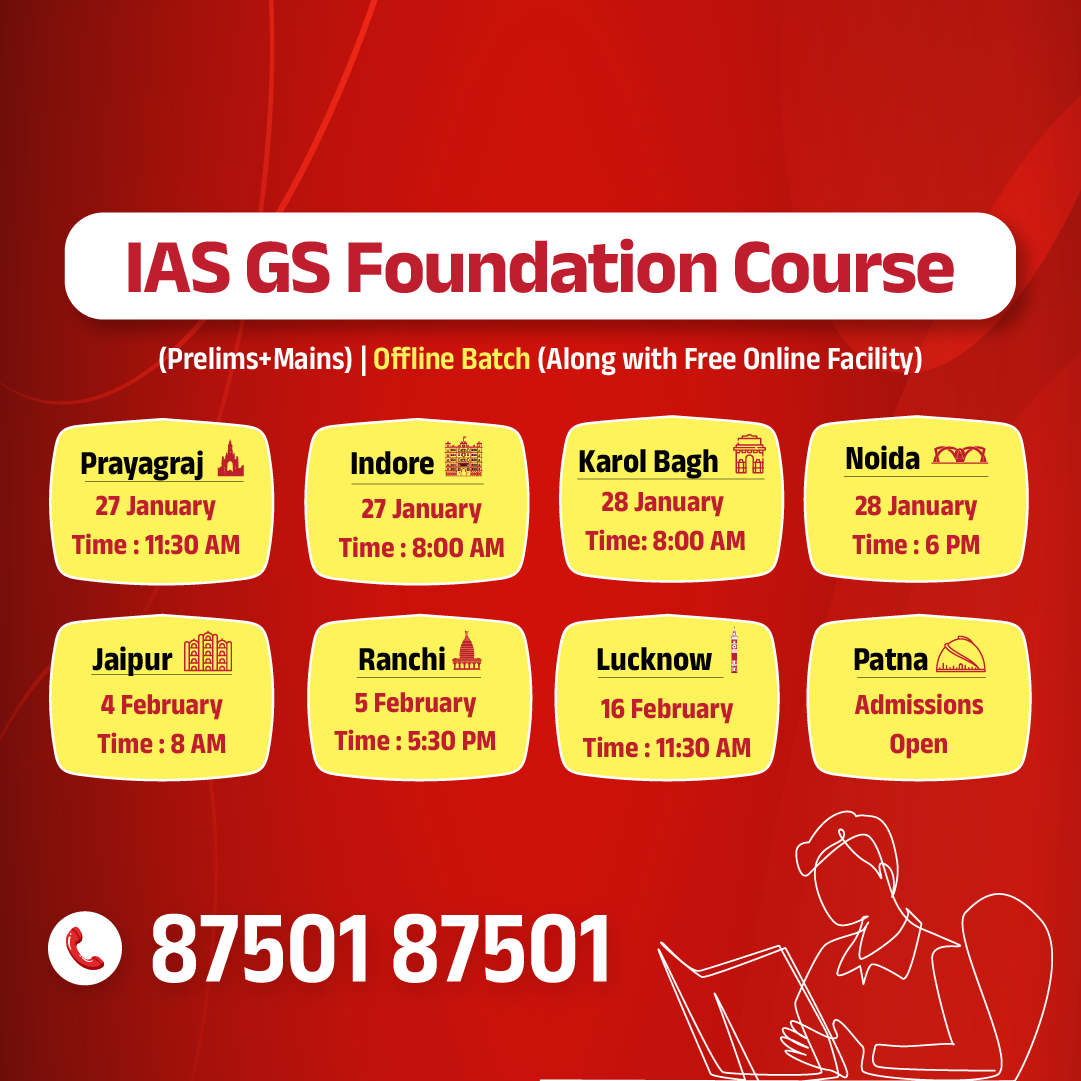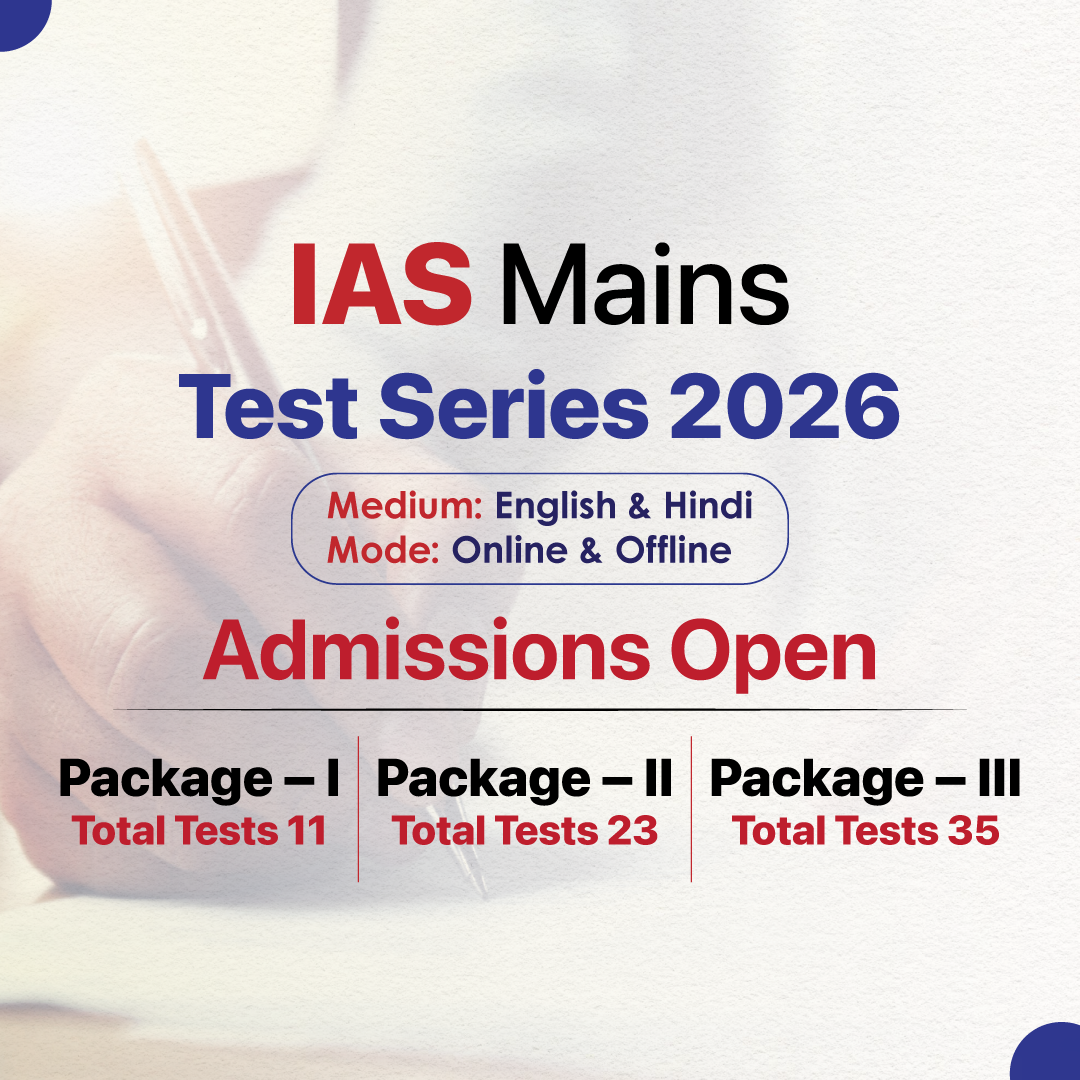Jharkhand Switch to Hindi
Heatwave in States, including Jharkhand
Why in News?
Recently, the India Meteorological Department forecast heatwave conditions in parts of Karnataka, Odisha, West Bengal, Jharkhand, Andhra Pradesh and Yanam over the next two-three days.
Key Points
- The weather department has forecast a harsh and arid summer over a majority of regions of the country during April-June 2024.
- There is a high probability of heatwave episodes lasting in a range of 10 to 20 days during the period.
- During April, the performance of the pre-monsoon rainfall shall be below average, mainly over coastal India, eastern and south peninsular India.
- The rainfall forecast indicates that the dry weather since February 2024 would continue over these regions.
- Aridity and shortage of water will aggravate during the summer season of 2024.
Heatwaves
- Heatwaves are prolonged periods of excessively hot weather that can cause adverse impacts on human health, the environment, and the economy.
- India, being a tropical country, is particularly vulnerable to heatwaves, which have become more frequent and intense in recent years.
- IMD Criteria for Declaring Heat Wave in India:
- Heat waves need not be considered till the maximum temperature of a station reaches at least 40°C for Plains and at least 30°C for Hilly regions.
- If the normal maximum temperature of a station is less than or equal to 40°C, then an increase of 5°C to 6°C from the normal temperature is considered to be heat wave condition.
- Further, an increase of 7°C or more from the normal temperature is considered a severe heat wave condition.
- If the normal maximum temperature of a station is more than 40°C, then an increase of 4°C to 5°C from the normal temperature is considered to be heat wave condition. Further, an increase of 6°C or more is considered a severe heat wave condition.
- Additionally, if the actual maximum temperature remains 45°C or more irrespective of normal maximum temperature, a heat wave is declared.
Bihar Switch to Hindi
Centre Aims 7-fold Jump in Wheat Procurement
Why in News?
Recently, the Centre has announced plans to significantly increase wheat purchase from non-traditional states of Uttar Pradesh, Rajasthan, and Bihar and set a target of seven-fold jump in procurement to 50 lakh tonnes in 2024-25.
Key Points
- Uttar Pradesh, Rajasthan, and Bihar contributed only 6.7 lakh tonnes to the central reserve during 2023-24.
- The Union Food Ministry has decided to procure 16% of the total wheat procurement target of 310 lakh tonnes set for 2024-25.
- Wheat procurement at Minimum Support Price (MSP) is normally undertaken by the Centre's nodal agency Food Corporation of India (FCI) and state agencies.
- National Agricultural Cooperative Marketing Federation of India Ltd.(NAFED) and National Co-operative Consumers' Federation of India Ltd. (NCCF) have also been included in the procurement target of 5 lakh each in 2024.
- Wheat MSP has been fixed at Rs 2,275 per quintal for 2024.
- According to the sources, wheat procurement from non-traditional states will help restore allocation of wheat under the Pradhan Mantri Garib Kalyan Anna Yojana and other welfare schemes.
- Steps taken to strengthen wheat procurement in non-traditional states:
- The procurement window has been extended to April instead of March, and set up a dedicated farmer helpline to address procurement-related queries.
- The government has decided to ensure transfer of MSP to bank accounts of farmers within 48 hours, streamlined procurement incidental burden for farmers, smoothened banking-related issues such as Aadhaar integration with bank accounts.
- The government has also opened more procurement centres targeting production hotspots, set up mobile procurement centres, and decided to leverage Self Help Groups, Panchayats, Farmer Producer Organisations.
- A central control room has been set up in the FCI headquarters in Delhi for real-time monitoring.
- According to the food ministry, six lakh tonnes of wheat have already been procured so far this year from Uttar Pradesh, Madhya Pradesh, Rajasthan, and Bihar.
- The government has banned wheat exports since May 2022 to boost domestic availability and check prices.
- The wheat production is estimated to be a record 112 million tonnes during 2023-24, compared to 2022's 110 million tonnes, as per the agriculture ministry.
National Agricultural Cooperative Marketing Federation of India Ltd (NAFED)
- It is an apex organization of marketing cooperatives for agricultural produce in India.
- It was founded on 2nd October 1958 and is registered under the Multi-State Co-operative Societies Act, 2002.
- NAFED is now one of the largest procurement as well as marketing agencies for agricultural products in India.
Rajasthan Switch to Hindi
Rajasthan Government Urged to Boost Destination Wedding Industry
Why in News?
According to the sources, the tourism industry in Rajasthan is looking to intensify efforts to grow the destination wedding market.
- Executives from the tourism industry said although Rajasthan hosts several royal weddings every year, the involvement of the tourism department seems to be lacking.
Key Points
- According to the Rajasthan Tourism Department, the state witnessed a remarkable increase in domestic tourism, with over 17.90 crore tourists visiting the desert state in 2023.
- In 2023, Rajasthan welcomed nearly 18 crore domestic and 17 lakh foreign tourists, a significant increase from the figures in 2020, which were 1.51 crore domestic and 4.46 lakh foreign tourists.
- The numbers also saw a rise from 2.19 crore domestic and 34,806 foreign tourists in 2021 to 10.83 crore domestic and 39,684 foreign tourists in 2022.
- Rajasthan has been a pioneer in evolving unique tourism products, be it the launch of the Palace on Wheels luxury train in 1982 or creation of the festival experience like Pushkar Fair or adaptive reuse of heritage properties as tourist destinations.
- The State granted the tourism sector the status of industry in 1989 and has since extended many fiscal incentives for the sector, beginning with the capital investment subsidy in 1993.
Rajasthan Tourism Policy, 2020
- Vision
- To reposition Rajasthan as a preferred tourism destination for both domestic and international tourists by offering tourists a high quality experience.
- Through responsible and sustainable policies ensuring conservation of natural, historical and cultural heritage of the State while simultaneously accelerating socio-economic development by improving livelihood opportunities for the local population.
- Objectives
- Promote Rajasthan as a leading tourism brand in national and international markets.
- Strengthen and diversify existing tourism products.
- Provide innovative tourism products and services with focus on lesser known destinations especially in rural areas.
- Improve the connectivity of tourist destinations through road, rail and air.
- Expand tourist accommodation infrastructure.
- Broad based promotion and marketing of tourism products.
- Facilitate tourism specific skill development to create gainful self-employment.
- Create suitable mechanisms to promote effective interdepartmental coordination.
- Take steps to encourage private sector investment in the State.
- To provide a safe and secure environment for tourists and in particular women travellers and also improve tourist grievance redressal systems.
- To empower the department with suitable administrative structure for extending approvals for establishment of tourism units.
- Market research and developing statistics grid development framework for better policy making and forecasting.
Rajasthan Switch to Hindi
Solar Energy Project in Rajasthan
Why in News?
Recently, UltraTech Cement Ltd announced the completion of a 100-megawatt (MW) solar energy project under the Group Captive Scheme in Rajasthan.
- This is the company's first project to source power for its captive consumption from the inter-state transmission network.
Key Points
- Power from this project will be available to the company’s units in Rajasthan, Gujarat, Himachal Pradesh, Tamil Nadu, Odisha among others.
- The company now has a capacity of 612 MW of renewable power and 278 MW of Waste Heat Recovery System (WHRS).
- WHRSs are revolutionary energy-saving power generation systems that recover and reuse energy from the main engine's exhaust gas.
- The company now has a capacity of 612 MW of renewable power and 278 MW of Waste Heat Recovery System (WHRS).
- UltraTech Cement has committed to increasing its green power mix to 85% by 2030, and the project reaffirms its dedication to innovation, sustainability, and the pursuit of a brighter, cleaner future for all.
The Group Captive Scheme
- It is a Power purchase mechanism which involves individuals or groups establishing a power plant to buy electricity specifically for their own use.
- These captive users must collectively own a minimum of 26% of the power plant and consume a minimum of 51% of the generated electricity annually, based on their proportional ownership shares, with a variation not exceeding 10%.


.png)




.jpg)







.png)


.jpg)

 PCS Parikshan
PCS Parikshan

